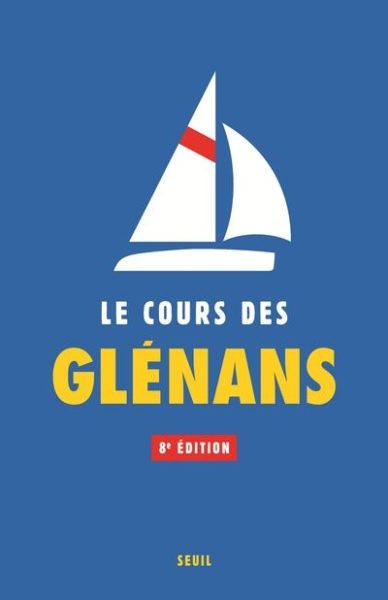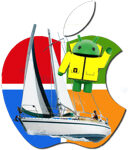This holiday season, during which we happily return for a few days to the traditions, inspires me to rethink the traditions of an activity that is dear to us : navigation.
Not that of our illustrious predecessors, royal navies, discoverers of distant lands, corsairs, pirates or honest merchants, isn't it. I want to talk about the one that has concerned us for more than half a century : yachting. Especially to the attention of our friends who are sailors born in 1970-80, who discovered navigation from the years 1990, period of the appearance of GPS on board our pleasure boats.
I, who is constantly adding a website and a blog on the intricacies of computing onboard, of all these tools which bring us our position a few meters away, what the weather will be like in eight days, the height of water under the keel, the time at which it will be necessary to tack to take advantage of the favorable wind shift, and how much more information is available in three mouse clicks or three taps on a tablet, I don’t forget how I learned to sail.
The basics of navigation.
I was lucky to be born in the years 50, and then to discover boating in the 70, with a sail thread in hand (whipping twine) and a rigid chart on my knees. I spent weeks learning to find myself on the chart and the landscape around me by practicing this nautical basic : the steering by alignment.
Good trainee and highly motivated, I got on the cruise, crossed my beginner's "Cape Horn", Passage of the Teignouse, Raz de Being, Once Blanchard, by practicing rustic but efficient navigation, this other basic the dead reckoning. It is understood that, regarding the number of hours spent at the chart table, it was better not to get seasick, or provide a bucket nearby !
Yachtsman more informed, I traveled under sail and without a motor, with any kind of boats our beautiful Atlantic coasts, with a sounding line, a log line, and weather forecastss from France Inter and BBC Radio4. Even in the thick mists of the English Channel, I do not recall ever having to ask anyone's help to land or take a boyage. Anyway, even if I had been equipped with a VHF – what a luxury – I hadn't learned how to use it, can you imagine !
Became a professional yachtman, I had no other choice, to perform offshore cruising, than learning how to use a sextant. Ah, the celestial navigation ! This final basic religiously addressed, sure access to an elite, to the restricted circle of Moitessier, Tabarly, of “Damien”… The only instrument for cruising 4000 nautical miles and land right at the planned location, despite great anguish in the preceding hours, and great astonishment to discover the place in question in the bow, not another one. This was at the time when the landing point was not yet called a “waypoint”.
Electronic era
I ended up learning how to use all the beautiful toys that I met during my sailings : GPS, Radar, ChartPlotters, SSB… Later, devenu shipchandler, I sold some, I installed some, I trained users. Finally, more recently, computers have been installed on board our boats. : cell phones, light, inexpensive used, with software developed to facilitate our navigator's life. The rest you know that…
I fear that today many “young” sailors will no longer be able to do without it.. Traditional sailing schools, essential in my time, no longer make much money, or charter disguised as a sailing school “From Level Zero to Astro Navigation” in one week ! Who would still be able to port entrance only sailing, engine failure, without calling a trailer by VHF ? Which can still cross the Channel with dead reckoning, batteries went flat, and landing to Falmouth steering the right side of the Lizard ?
Far be it from me to criticize, to denigrate, even less to lecture. I have simply observed for more than twenty years that the advent of this electronic tool has encouraged many apprentice navigators to place extreme trust in them., and forget the basics of navigation that I had, for my own, the chance to acquire.
Back to basics

 So during this holiday season where one of the traditions consists of giving gifts, So treat yourself to a book that tells you about these famous fundamentals, i.e. : Glenans Sailing Manual, or even Deep sea navigation, by Olivier Stern-Veyrin, out of print but which can still be found on the internet if you look carefully. Visit the site navastro.fr or immerse yourself in the “Fundamental Formula of Astro Navigation” from this page by François Lonchamp. Then at Spring, try to turn your first GPS navigation computer off. You will see, it will be a saving return to the sources, before turning your iPad back on and opening your favorite apps.
So during this holiday season where one of the traditions consists of giving gifts, So treat yourself to a book that tells you about these famous fundamentals, i.e. : Glenans Sailing Manual, or even Deep sea navigation, by Olivier Stern-Veyrin, out of print but which can still be found on the internet if you look carefully. Visit the site navastro.fr or immerse yourself in the “Fundamental Formula of Astro Navigation” from this page by François Lonchamp. Then at Spring, try to turn your first GPS navigation computer off. You will see, it will be a saving return to the sources, before turning your iPad back on and opening your favorite apps.
Merry Christmas and happy New Year, see you next year !
–––



Almost the same initiatory journey as yours. Same literary references. I still have the OSV and the Glénan in an old box. Bleu, I believe, the glenan of 73 or 74… I will add the blue sh1 too and cardboard!
I am soon ending a long meteorological career with the National Meteorology, then MF (Soon 40 years in box), and I teach the captains’ weather module 200. Thank you Francis for all the teaching on your site. Your video allowed me to understand the teaching of Navimail from the right end.